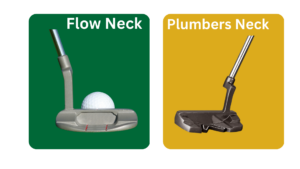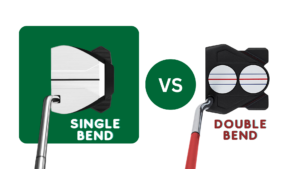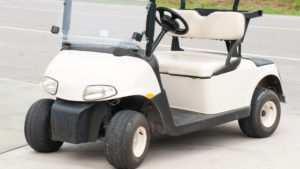The size of a golf ball is an important factor to consider when playing the game. The official rules state that a golf ball must be no larger than 1.68 inches in diameter, or 42.67 millimeters – but how many centimeters is this?
It may not seem like much, but understanding and knowing exactly how many cm a golf ball should measure can make all the difference in your game. Whether you’re new to golfing or have been hitting balls for years, it’s essential to understand why measuring the diameter of your golf balls matters and what factors affect their size so that you can choose the right one for yourself.
In this blog post, we will explore precisely how many cm is a regulation-sized golf ball as well as discuss its benefits, various factors influencing its size, and tips on selecting one best suited for you.

Table of Contents:
- What is the Standard Size of a Golf Ball?
- History of Golf Ball Size
- American ball vs the British ball
- How to Measure the Diameter of a Golf Ball?
- The Benefits of Knowing the Diameter of Your Golf Ball
- Factors That Affect the Diameter of a Golf Ball
- Tips for Choosing the Right Size Golf Ball for You
- FAQs in Relation to How Many Cm is a Golf Ball
- Is a golf ball 5 cm?
- What is the average size of a golf ball?
- How big is a 7 cm ball?
- Is the standard diameter of a golf ball is 42.67 mm?
- How many golf balls can fit in a golf hole?
- Can I play golf with ping pong balls?
- Conclusion
What is the Standard Size of a Golf Ball?

Golf balls come in a variety of sizes, but the standard size is 1.68 inches (42.67 mm) in diameter. This measurement is regulated by the Rules of Golf and must be adhered to for any ball used on an official golf course or tournament play. The regulation size allows players to have consistent performance from different brands and models, as well as improved accuracy and distance control when playing with their own ball type.
When measuring the diameter of a golf ball, it’s important to use a ruler or tape measure that can accurately measure down to at least one-eighth inch (3mm). For more precise measurements, calipers or digital Vernier calipers can also be used. It’s important to note that temperature and humidity levels can affect the diameter of a golf ball over time, so regular checks should be done if you are using your own personal equipment on an official course or tournament setting.
When choosing which type is best for you, it’s important to understand what each offers before making your decision; some may offer increased spin rates while others may provide greater distance off tee shots, so try out different sizes until you find what works best for you.
History of Golf Ball Size
The earliest known golf balls were made of wood and were roughly the size of a modern-day tennis ball. These balls were called “featheries” and were made by stuffing wet goose feathers into a leather pouch.
Before the 1980s, larger golf balls were common for golf play. But In the mid-1800s, a new type of golf ball was developed, which was made of a hard, rubber-like material called gutta-percha. These balls were smaller than featheries, and their size was not standardized. Golfers often made their own gutta-percha balls by molding the material into a ball shape.
In 1898, the first standardized modern golf balls size were established by the Royal and Ancient Golf Club of St Andrews, which set the diameter of a standard golf ball at 1.62 inches. This size remained the standard for many years until the United States Golf Association (USGA) changed the standard to 1.68 inches in 1932.
American ball vs the British ball

Historically, there have been some differences between American and British golf balls. The main difference was in the size and weight of the ball. British golf balls were smaller and heavier than American golf balls.
British golf balls were traditionally 1.62 inches (4.12 cm) in diameter and weighed 1.62 ounces, while American golf balls were 1.68 inches (4.27 cm) in diameter and weighed 1.62 ounces. So the golf ball weight should not be more than 45.93 grams. This difference in size and weight was due to variations in manufacturing techniques and materials used.
However, with the standardization of golf ball specifications by the United States Golf Association (USGA) and the Royal and Ancient Golf Club of St Andrews (R&A) in 1990, the size and weight of golf balls are now regulated and are the same for all golf balls, regardless of where they are manufactured. The British R&A also set the 4.25-inch golf hole diameter.
Golf balls come in a variety of sizes and materials, but the standard size for golf balls is 1.68 inches in diameter. So an official golf ball can not be smaller than 1.68 inches. To ensure you are using the correct size ball, it’s important to measure the diameter accurately. Let’s take a look at how to do that in our next heading.
How to Measure the Diameter of a Golf Ball?

Measuring the diameter of a golf ball is an important part of understanding your game and improving your performance. Knowing the exact size of your ball can help you gain better accuracy and distance control, as well as consistent performance from different brands and models. Here are some tips on how to measure the diameter of a golf ball.
Using a Ruler or Tape Measure:
The simplest way to measure the diameter of a golf ball is with a ruler or tape measure. Place one end at the center point of the ball, then extend it out until it reaches the outer edge. Make sure that you’re measuring in inches for accurate results. You should be able to get an approximate measurement this way, but keep in mind that it won’t be 100% precise due to slight variations in shape between balls.
Measuring with Calipers:
If you want more precise measurements, calipers are another option for measuring golf balls accurately down to fractions of an inch (0.01). These tools have two arms which open up when placed around any object – like a golf ball – allowing you to read off its exact dimensions quickly and easily without having to do any calculations yourself.
Using Digital Vernier Caliper:
For even greater precision than traditional calipers, digital vernier calipers offer readings down to 0.001 inches (1/1000th) accuracy. This type of tool uses electronic sensors instead of mechanical parts so there’s no need for manual adjustments or calibrations before taking measurements; just place them around your golf ball and press “read” for instant results.
No matter what method you use, always remember that temperature and humidity levels can affect the size slightly so make sure to take these factors into account when measuring your balls as well.
Measuring the diameter of your golf ball is a great way to ensure you are getting the most out of your game. By understanding the size and shape of your golf ball, you can improve accuracy and distance control while also gaining insight into how different brands and models perform. Let’s take a look at some of the benefits that come with knowing the diameter of your golf ball.
The Benefits of Knowing the Diameter of Your Golf Ball

Knowing the diameter of your golf ball can be beneficial for a variety of reasons.
- For starters, it can help you improve accuracy and distance control when playing. The size of the ball affects how far it will travel when hit with a club, so having an accurate measurement is important to ensure that you’re getting maximum performance out of each shot. Additionally, knowing the exact size allows you to compare different brands and models more accurately in order to find one that works best for your game.
- Another benefit is a better understanding of your swing mechanics. When hitting a golf ball with a club, there are many factors at play such as angle, speed and power which all affect the trajectory and overall distance traveled by the ball. By measuring the diameter before each shot, you can gain insight into these variables and adjust accordingly if needed in order to achieve optimal results on every stroke.
- Being aware of any changes in temperature or humidity levels can also impact how well your golf balls perform over time. If conditions become too extreme either way (too hot or too cold), then this could lead to expansion or contraction which would alter their size slightly – something that could easily go unnoticed without taking regular measurements beforehand.
By understanding the diameter of your golf ball, you can make sure that you are always playing with a ball that is suited to your individual needs and preferences. This knowledge also helps improve accuracy and distance control, as well as allowing for consistent performance from different brands and models. Let’s now take a look at some factors that affect the diameter of a golf ball.
Factors That Affect the Diameter of a Golf Ball

- Temperature and humidity levels can have a significant impact on the diameter of a golf ball. As temperatures rise, the air inside the ball expands, causing it to increase in size. Similarly, when temperatures drop, the air contracts and causes the ball to shrink. High humidity levels also cause an increase in size as moisture is absorbed into the core of the ball. Conversely, low humidity leads to a decrease in size due to water evaporating from within.
- Age and wear & tear on a golf ball can also affect its diameter over time. The more you play with your balls, they will naturally start to lose their original shape and become misshapen or flattened out which results in them becoming larger than normal for that particular model of golf ball. This is why it’s important to replace your balls regularly if you want consistent performance from round-to-round or tournament-to-tournament without having any surprises midgame.
The diameter of a golf ball can be affected by several factors, such as temperature and humidity levels, age and wear & tear on the ball, and quality and construction materials used in manufacturing. By understanding these factors, you will be better equipped to choose the right size golf ball for your skill level and playing style.
Tips for Choosing the Right Size Golf Ball for You
Choosing the right size golf ball is essential for improving your game. The size of a golf ball affects its performance, so it’s important to understand the different types available and how they can benefit you.
Consider Your Skill Level and Playing Style:
When selecting a golf ball, consider your skill level and playing style. Beginners should look for balls that are easier to hit off the tee and have less spin on approach shots. Experienced players may want more control over their shots with higher spin rates or distance-enhancing features such as dimples or cores designed for greater speed.
Understand the Different Types of Balls Available:
There are several types of golf balls available in various sizes, from standard regulation size to oversized models designed for maximum distance off the tee. Regulation-size balls measure 1.68 inches in diameter while larger ones measure up to 1.75 inches in diameter; these larger models provide increased launch angle and longer carry distances when struck correctly by experienced players who generate enough clubhead speed at impact.
Ultimately, choosing the right size golf ball comes down to personal preference based on your swing mechanics and skill level as well as what type of shot you’re trying to execute on any given hole or situation during play. Experimenting with different sizes will help you find which one works best for you – whether it be a regulation-sized model or an oversized version – so take some time out on the range before making a purchase decision.
FAQs in Relation to How Many Cm is a Golf Ball
Is a golf ball 5 cm?
No, a golf ball is not 5 cm in diameter. The size of a golf ball is determined by the Rules of Golf and must be between 1.68 inches (42.67 mm) and 1.72 inches (43.69 mm). A golf ball’s circumference must also be no less than 4.27 inches (108 mm). These measurements are important for ensuring that all players have an equal chance to compete on the course regardless of equipment used or skill level.
What is the average size of a golf ball?
The average golf ball size is 1.68 inches in diameter and golf ball weigh is around 1.62 ounce. These are designed to be spherical, with the golf ball dimples on the surface that help reduce drag and increase lift when hit by a club. The weight of the ball also affects its flight path, so it’s important to choose one that suits your playing style and skill level.
How big is a 7 cm ball?
A 7 cm ball is approximately 2.75 inches in diameter. This size of golf ball is commonly used for practice and can be found in most golf stores or online retailers. It’s a good choice for beginners as it offers more control than larger balls, but experienced players may find it too small to get the distance they need on their shots.
Is the standard diameter of a golf ball is 42.67 mm?
Yes, the standard diameter of a golf ball is 42.67 mm. This measurement has been established by the Rules of Golf and is consistent across all brands and models of golf balls. The size of a golf ball affects its performance, so it’s important to use one that meets this specification for optimal play.
How many golf balls can fit in a golf hole?
The standard size for a golf hole is 4.25 inches (10.8 cm) in diameter and approximately 4 inches (10.2 cm) deep. So, approximately 20-21 golf balls can fit in a golf hole if they are packed tightly together. However, in actual practice, only one golf ball is placed in the hole during play.
Can I play golf with ping pong balls?
While it is technically possible to play golf with ping-pong balls, it is not recommended. Golf balls are typically made with a solid or multi-layered core and a dimpled outer surface that is optimized for aerodynamics and ball flight.
On the other hand, a Ping pong ball is lightweight, hollow, and has a smooth surface, which makes them unsuitable for use in golf. Besides, Ping pong balls would not travel as far as golf balls and would not be able to withstand the impact of being struck by a golf club. Also, they would not provide the same level of accuracy or control as golf balls, which could negatively impact your game.
Conclusion
Knowing the diameter of your golf ball is an important part of playing golf. The standard size for a golf ball is 42.67 mm or 1.68 inches, which equates to approximately 4.267 cm in diameter.
However, there are many factors that can affect the size and performance of your golf balls such as temperature, altitude and humidity levels so it’s important to take these into consideration when choosing the right size for you.
With this knowledge in mind, you’ll be able to find a golf ball that will help improve your game and give you better results on the course.






